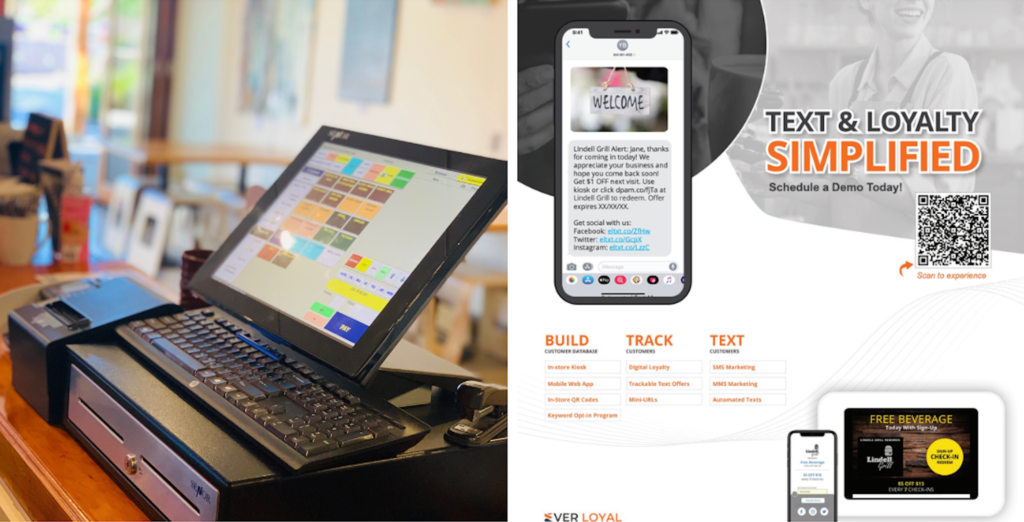A Game-Changer in Building Customer Relationships
Digital Customer Loyalty and Rewards Programs vs. Point of Sale

Introduction:
In today’s highly competitive business landscape, building customer loyalty has become paramount. Brands are continuously seeking effective strategies to engage and retain customers. Two popular approaches that have emerged in recent years are traditional point-of-sale (POS) customer loyalty and rewards programs and their digital counterparts. While both aim to boost customer loyalty, digital loyalty programs offer unique advantages that make them a game-changer in the customer relationship arena. In this blog post, we will explore the benefits of digital customer loyalty and rewards programs over traditional POS systems, shedding light on why businesses should embrace the digital shift.
- Enhanced Personalization and Targeting:
Digital loyalty programs allow businesses to collect valuable customer data, offering a deep understanding of individual preferences, buying patterns, and demographics. Armed with this information, companies can deliver highly personalized rewards and offers tailored to each customer’s needs and interests. By leveraging data analytics and segmentation techniques, businesses can create targeted marketing campaigns that resonate with customers, leading to increased engagement and loyalty. In contrast, traditional POS loyalty programs often rely on generic discounts or points systems that lack personalization, missing out on the opportunity to make customers feel valued and understood.
- Seamless Omnichannel Experience:
Digital loyalty programs transcend the boundaries of brick-and-mortar stores, seamlessly integrating online and offline touch-points. Customers can engage with the program through various digital channels, including mobile apps, websites, social media, and email. This approach allows customers to access their rewards, check their point balance, and redeem offers irrespective of their location or preferred shopping method. The convenience and flexibility of digital loyalty programs ensure customers stay engaged regardless of how they choose to interact with the brand, thereby reinforcing their loyalty.
- Gamification and Interactive Elements:
Digital loyalty programs have the power to transform customer engagement into an interactive and enjoyable experience. By incorporating gamification elements such as challenges, milestones, and leaderboards, businesses can create a sense of fun and competition, motivating customers to actively participate and earn rewards. These interactive features tap into customers’ innate desire for achievement and recognition, making the loyalty program more engaging and memorable. Traditional POS loyalty programs, on the other hand, often lack such gamified elements, making them feel mundane and uninspiring.
- Real-Time Tracking and Analytics:
Digital loyalty programs provide businesses with valuable real-time data and analytics. Companies can track customer engagement, monitor the success of campaigns, and make data-driven decisions to optimize their loyalty program’s performance. With instant access to actionable insights, businesses can adapt their rewards and offers quickly, address customer pain points, and identify trends and opportunities. This agility allows companies to stay ahead of the competition and deliver an exceptional customer experience. Traditional POS programs typically lack the real-time tracking and analytics capabilities, leaving businesses in the dark about the program’s effectiveness and limiting their ability to adapt and improve.
- Social Sharing and Advocacy:
Digital loyalty programs have the inherent capability to leverage social media and word-of-mouth advocacy. With the integration of social sharing features, customers can effortlessly share their loyalty program achievements, rewards, and experiences with their social networks. This amplification of positive customer sentiment not only increases brand visibility but also acts as a powerful endorsement, attracting new customers and fostering a sense of community. Traditional POS programs, while they may generate some advocacy, lack the seamless integration with social media that digital programs offer.
Conclusion:
In the digital age, businesses need to evolve their customer loyalty and rewards programs to stay relevant and competitive. Digital loyalty programs outshine traditional POS programs by offering enhanced personalization, seamless omni-channel experiences, gamification, real-time tracking, and social sharing capabilities. By embracing the power of digital loyalty programs, companies can forge stronger and more meaningful relationships with their customers, driving loyalty, advocacy, and ultimately, long-term business success. The digital shift allows businesses to harness the full potential of customer data, deliver personalized experiences, and create engaging interactions that resonate with customers across multiple touch-points. It’s time to leverage the benefits of digital customer loyalty and rewards programs to unlock new avenues of growth and cement your brand as a customer-centric leader in the marketplace.
